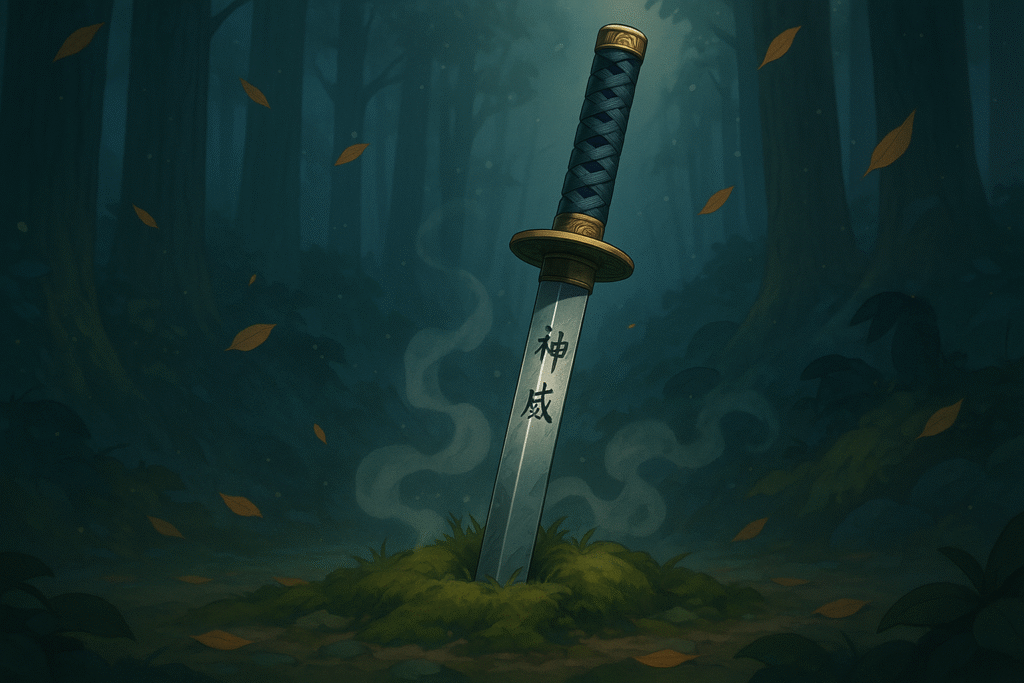Have you ever imagined being attacked by a seemingly innocent strip of cloth? In Japanese folklore, such nightmares are embodied by the ittan momen, a peculiar and deadly yokai that has haunted the skies of Kagoshima for centuries. Let’s unravel the mysteries of this unique supernatural being!
What is an Ittan Momen?
The ittan momen (一反木綿, いったんもめん) is one of Japan’s most distinctive yokai—supernatural creatures from Japanese folklore. The name literally translates to “one tan of cotton,” with tan being a traditional Japanese unit of measurement approximately 28.8 cm by 10 meters. This accurately describes the yokai’s appearance: a long, narrow strip of white cotton cloth that flies through the night sky, seeking human victims.
Unlike the benevolent Hakutaku, Japan’s mythical guardian of knowledge, the ittan momen has a decidedly malevolent nature. This flying cloth belongs to the tsukumogami category—ordinary objects that have acquired a spirit after existing for 100 years.
Origins and Habitat of the Ittan Momen
The ittan momen originated in Kagoshima Prefecture on Kyushu Island, Japan’s southernmost main island. Local legends tell of these flying cloth strips appearing suddenly on dark nights, particularly during the summer months when the warm air currents provide ideal flying conditions.
According to folklore experts, the earliest documented accounts of ittan momen date back to the Edo period (1603-1867), though oral traditions suggest they may have existed in local stories long before then.
Appearance and Behavior
What Does an Ittan Momen Look Like?
The ittan momen appears as a plain, white strip of cotton cloth, typically measuring about 10 meters in length—the standard size of one tan of fabric. Unlike many elaborately designed yokai, the ittan momen’s terror lies in its ordinary appearance. At first glance, it might be mistaken for laundry blown by the wind, which makes its attacks all the more surprising.
Some accounts describe ittan momen with faint eyes or mouth-like markings on their surface, though these features often only become visible just before an attack.
How Does an Ittan Momen Attack?
The attack method of the ittan momen is simple yet terrifying:
- It silently flies through the night air, seeking lone travelers or people walking in isolated areas
- Upon finding a victim, it swoops down without warning
- The cloth wraps itself tightly around the victim’s face and neck
- It proceeds to either smother or strangle its victim to death
What makes the ittan momen particularly dangerous is its stealth and speed. Victims rarely have time to react before finding themselves wrapped in its suffocating embrace. Unlike the more playful yokai that might just cause mischief (such as those mentioned in our article about how to say cute in Japanese), the ittan momen’s intentions are deadly serious.
Cultural Significance of the Ittan Momen
The ittan momen represents more than just a scary story in Japanese culture. Like many yokai, it embodies specific cultural fears and serves as a cautionary tale. In this case, the ittan momen reflects the Japanese concept of tsukumogami—the belief that ordinary objects can develop souls and sometimes vengeful spirits after long periods of use.
This yokai also highlights the traditional Japanese belief that everyday items should be treated with respect. The mistreatment of cloth—a valuable commodity in pre-industrial Japan—might result in its transformation into a vengeful spirit seeking retribution.
Modern Interpretations of Ittan Momen
In contemporary Japanese pop culture, the ittan momen has appeared in:
- Anime series like “GeGeGe no Kitarō” and “Yokai Watch”
- Manga collections focusing on traditional yokai
- Video games featuring Japanese folklore creatures
- Modern yokai encyclopedias and art collections
Modern depictions sometimes soften the ittan momen’s deadly nature, occasionally portraying it as a potential ally that can be ridden like a flying carpet—though traditional accounts emphasize its dangerous nature.
Want to explore Japan’s culture?
Discover Japan’s rich culture, traditions, and hidden gems with our expertly crafted guides. Get insider tips on travel, food, and history. All for free!
How to Protect Yourself from an Ittan Momen
According to folklore, there are several methods to avoid or survive an ittan momen encounter:
- Carry scissors or a sharp knife to cut the cloth if attacked
- Travel with companions, as ittan momen typically target solitary individuals
- Avoid walking alone at night in areas where ittan momen have been sighted
- Some traditions suggest that speaking polite language and showing respect to old cloth items can prevent them from transforming into vengeful spirits
Understanding Japanese protective phrases might help too! If you’re interested in learning more about Japanese language and culture, our JLPT N5 Study Guide includes essential vocabulary and phrases that might just save you from supernatural encounters.
Other Cloth-Based Yokai in Japanese Folklore
The ittan momen isn’t the only textile-based yokai in Japanese folklore. Others include:
- Furutsubaki: animated old camellias that disguise themselves as beautiful women
- Boroboroton: a ragged futon that attacks sleepers
- Kasabake: old umbrellas that grow a single eye and leg
- Itachi-zakura: weasel spirits that disguise themselves as strips of cloth
These textile yokai share similar origins as tsukumogami but manifest in different forms and behaviors.
Experiencing Ittan Momen in Japan Today
For those interested in yokai culture, several locations in Japan celebrate these supernatural beings:
- Mizuki Shigeru Road in Sakaiminato features bronze statues of yokai, including the ittan momen
- Yokai museums throughout Japan often include ittan momen displays
- Summer festivals in Kagoshima sometimes include ittan momen-themed decorations or costumes
- Kyushu folklore tours often highlight locations associated with the ittan momen legend
Common Questions About Ittan Momen
Is the Ittan Momen real?
No, the ittan momen is a legendary creature from Japanese folklore, not a documented real entity.
Can Ittan Momen be friendly?
In traditional folklore, ittan momen are almost exclusively malevolent. However, modern adaptations sometimes portray more benign versions.
Why does the Ittan Momen attack humans?
As a tsukumogami, the ittan momen is believed to have developed resentment after years of use and eventual abandonment, leading to its vengeful behavior toward humans.
Where is the Ittan Momen most commonly found?
The ittan momen originated in Kagoshima Prefecture and is most commonly associated with this region of southern Japan.
What does Ittan Momen mean?
Ittan momen literally means “one tan of cotton,” with tan being a traditional Japanese measurement for cloth (approximately 10 meters).
Conclusion: The Enduring Legacy of the Ittan Momen
The ittan momen represents the unique ability of Japanese folklore to transform ordinary objects into extraordinary beings. This flying cloth yokai reminds us that in Japanese tradition, even the most mundane items might harbor supernatural potential.
Unlike expressions of joy in Japanese culture, which we explored in our article about the ureshii meaning, the ittan momen embodies fear and caution—teaching respect for material possessions and awareness of one’s surroundings.
Whether viewed as a cautionary tale, a cultural artifact, or simply a fascinating creature from folklore, the ittan momen continues to capture imaginations worldwide, demonstrating the rich textile of Japanese supernatural traditions that remains vibrant in today’s world.
Interested in learning more about Japanese language and culture? Our comprehensive JLPT N5 Study Guide covers essential vocabulary, grammar, and cultural concepts to help you begin your Japanese language journey!
About the Author: Our team of Japanese language and culture enthusiasts is dedicated to bringing you accurate, engaging content about all aspects of Japan. From yokai legends to language learning tips, we’re passionate about sharing our knowledge with readers worldwide.
Have you encountered other fascinating yokai in Japanese folklore? Share your favorites in the comments below!
Love Japan? Stay in the Loop!
Get the best of Japan straight to your inbox: language, culture & travel insights!




